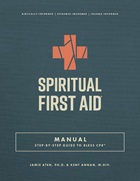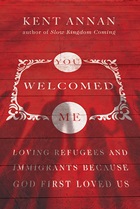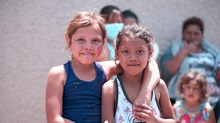Finding a Path Through the Legal Maze of Church Reopening

It hasn’t been easy to close the doors of the church to in-person community worship and ministry. The essential ministry of gathering God’s people for prayer, Bible study, acts of mercy, and spiritual development does not stop simply because people aren’t allowed to gather in large groups. Maintaining some semblance of church community life during COVID-19 stay-at-home and social distancing measures has been a challenge. Now that COVID-19 restrictions are being rolled back, the church community—members, attendees, pastors, and staff—are eager to “get back to church.”
Choosing Your Path Wisely
But churches are well advised to slow down and choose their path wisely. Reopening the church to the full range of in-person ministry is far more complicated than opening the church doors. With the virus still unabated by a vaccine, there are no guarantees as to what the future holds. Restrictions in effect today may relax or be tightened at any time depending on how officials respond to infection rates in the population. Going back to church won’t be the “normal” it was before COVID-19. Regular disinfecting, social distancing, and other safety measures will need to be in place for some time. Church reopening efforts need to be conducted in accordance with applicable laws and regulations and in a manner that supports the safety and well-being of the church body and local community.
One of the challenging considerations a church must not overlook as it charts its reopening course is the potential exposure to legal action. This may include sanctions or criminal liability when diverging from directives from governing authorities, potential civil lawsuits related to COVID-19 exposure at church gatherings, and exposure to “uncovered” circumstances in insurance policies. At the same time, some people are filing suit against states for religious infringement, and others are pushing churches to reopen regardless of the regulatory environment. So churches face a complex and potentially conflictual legal liability and risk management situation.
As part of its ongoing effort to support the church in responding faithfully to COVID-19, the Humanitarian Disaster Institute in conjunction with the National Association of Evangelicals, recently conducted a webinar on Legal and Liability Issues for Reopening the Church. The following highlights of that webinar may help church leaders find their way through the opening maze.
Considering Federal Vs. State Guidelines
Rob Showers, attorney and advisor-at-large for Church Law and Tax, points out that, “while there are federal guidelines for reopening,” state laws “are as different as night and day on how they are proposing churches should reopen.” Further complicating the issue, information, recommendations, and regulations specific to churches may be lacking, and in some cases directives change. The truth is, no one has been through this before, so policies and decisions are being made up on the fly and churches are often left to sort out the best path with few official specifics.
How might a church plan for reopening if the federal and state governments lack church-specific guidelines and regulations? The first resource (whether specific guidelines are lacking or not) is to build relationships with local and state government and public health authorities. In the absence of church-specific guidelines, there generally are regulations for similar types of gatherings. For example, movie theaters, camps, community centers, schools, daycare facilities, and similarly-sized gatherings (i.e. sports, weddings, meetings) are likely to have specific requirements that can be appropriately applied to a church situation.
Matt Branaugh, Editor of Church Law and Tax, points out the importance of adhering to guidance from local, state, and to some extent federal, authorities:
You want to look at what’s being mandated, what’s required…anything outside of what’s being mandated or required, that’s going to increase your legal liability. If it’s not mandated, but recommended, that’s a little bit more relaxed. But that’s still a standard of sorts that you need to be cognizant of when you’re making a decision.
He goes on to add, “You need to be evaluating that information almost on a daily basis…this is a very fluid situation.”
Answering the Big Questions
Given the potential for legal exposure as churches reopen, Branaugh cautions, “sometimes when you’re considering legal liability, it’s easy to…lose sight of some of the very important considerations on the spiritual side of things. Do not forget your theological views and what you think you’re being called to do by God.” Yes, it is essential to consider and limit your legal liability, but there are many risk factors to identify and weigh in considering the best course forward for your church, including your congregation’s needs and receptivity to returning to church. So there is a lot of gray area to navigate.
The big questions each church must answer: How and when do we reopen? What is our best path to reopening? The answer should not rest on the shoulders of the pastor alone. Webinar participants encouraged churches to form a reopening group—whether it be the pastor and board or a separate task force—to really think through the level of liability the church is willing to tolerate and then carefully evaluate the many possibilities and ramifications of various reopening practices. They encouraged participation by members of the congregation as well as individuals knowledgeable in health, church law, and government.
Managing Your Risks
Managing risk is further complicated by potential insurance policy exclusions. Some insurers will not provide coverage if a church violates official local or state orders. So Charlie Cutler, President of ChurchWest Insurance Services, advises churches to inform their insurer of their reopening plans and get in writing that the church will be covered. Insurance may be further complicated by the ecclesiastical structure and insurance policies of some denominations. Communicate with your insurer, get the facts, and get written affirmation of coverage for your situation.
Finally, churches need to be very cautious regarding the inclusion of children in in-person church activities. This is difficult because the spiritual formation of children is so important and group activities—VBS, camps, Sunday school, worship services, catechism, and youth groups—have been essential to church ministry to children but the liability risk is high. It is one thing for adults to choose the risk of gathering and take precautions, an entirely different matter for minor children. Although churches can use guidelines being developed for camps, schools, and day care environments to plan for reopening churches to children, webinar participants recommend that in light of potential liability children should stay at home at least until schools reopen.
This post originally appeared at reopeningthechurch.com.
The Better Samaritan is a part of CT's
Blog Forum. Support the work of CT.
Subscribe and get one year free.
The views of the blogger do not necessarily reflect those of Christianity Today.






















